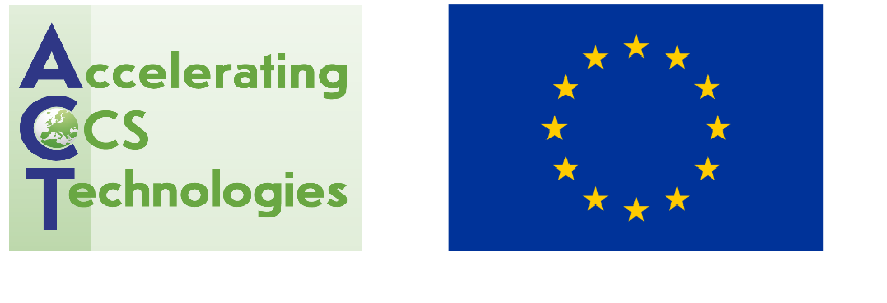The ACT projects are already delivering interesting results and you can now learn more about what they have achieved.
Many ACT projects will be present at the GHGT-14 conference in Melbourne 21-26 October 2018 and present their results.
You can find a summary of presentations and activities from the ACT projects below. Hopefully, the ACT presentations will be of interest for many because the knowledge sharing from ACT at GHGT-14 will be valuable in our common strive to get CCS deployed globally.
Presentations and activities from the ALIGN CCUS Project
ALIGN-CCUS and CSIRO are organising a half day (closed) workshop at GHGT14 where ALIGN-CCUS results are shared and discussed with Australian projects working on the same topics along the CCUS chain.
AlIGN presentations:
Van Os P, Kvamsdal H, Haugen HA, Akhurst M, Moser P, Mikunda T, ter Mors E, ALIGN CCUS: an ERA ACT project on the full CCUS chain to accelerate implementation of decarbonisation in industrial areas (ALIGN-CCUS, overall), Poster
Akhurst M, Bentham M, Kirk K, Neele F, Grimstad, A-A, Steps to achieve storage readiness for European industrial CO2 source clusters, ALIGN-CCUS (ALIGN-CCUS WP3.1), Oral presentation
Neele F, Gittins C, Wildenborg T, Mikunda T, Initiating large-scale storage in the Netherlands offshore (ALIGN-CCUS WP3.2), Oral presentation
Mikunda T, Neele F, Akhurst M, Pearce J, Skagestad R, Morgenthaler S, Sava CS, Maver M, Targeted CCUS R&D activities in industrial clusters (ALIGN-CCUS WP5), Oral presentation
Juliana Monteiro, Isabella Stellwag, Martin Mohana, Arjen Huizinga, Purvil Khakharia, Peter van Os, Earl Goetheer, De-oxygenation as countermeasure for the reduction of oxidative degradation of CO2 capture solvents, Oral presentation
Purvil Khakharia, Arjen Huizinga, Henk Trap, Juliana Monteiro, Earl Goetheer, Lab scale investigation on the formation of aerosol nuclei by a Wet Electrostatic Precipitator in the presence of SO2 in a gas stream, Poster
Purvil Khakharia, Shreyas Harsha, Arjen Huizinga, Juliana Monteiro, Earl Goetheer, In-situ experimental investigation on the growth of aerosols along the absorption column in PCCC, Oral presentation
Julia Barrio, Susana Garcia, M. Mercedes Maroto-Valer, Earl Goetheer, Purvil Khakharia, Juliana Garcia Moretz-Sohn Monteiro, Peter Moser, Georg Wiechers and Eva Sanchez Fernandez, Impact of transient operation on amine emissions at the Niederaussem capture plant. Poster
Peter Moser, Georg Wiechers, Sandra Schmidt, Knut Stahl, Muhammad Majid, Sven Bosser, Arthur Heberle, Hiroshi Kakihira, Mutsuhiro Maruyama, Ralf Peters, Stefan Weiske, Petra Zapp, Stefanie Troy, Bastian Lehrheuer, Benedikt Heuser, Thorsten Schnorbus, Jaap Vente, Jean-Pierre Pieterse, Earl Goetheer, Demonstrating the CCU-Chain and Sector Coupling as Part of ALIGN-CCUS - Dimethylether from CO2 as chemical Energy Storage, Fuel and Feedstock for Industries, Oral presentation
Peter Moser, Georg Wiechers, Sandra Schmidt, Reinhold Elsen, Earl Goetheer, Purvil Khakharia, Juliana Garcia Moretz-Sohn Monteiro, Klaus-Joachim Jens, Kjell-Arne Solli, Eva Sanchez Fernandez, Susana Garcia, Mercedes Maroto-Valer, Julia Barrio, Hanne Marie Kvamsdal, MEA consumption – ALIGN-CCUS: Comparative long-term testing to answer the open questions, Poster
Ardi Hartono, Hammad Majeed, Andrew Tobiessen, Hallvard F Svendsen and Hanna K Knuutila. Aerosol growth in an absorber for a post combustion CO2 capture using the 2-Amino-2-methyl-1-propanol/ Piperazine (CESAR 1) solvent, Poster
Kjell-Arne Solli, Lars Erik Øi, Electrochemical Corrosion Measurements of MEA aqueous solutions at elevated temperatures, Oral presentation
Presentations from the PRE-ACT project
Lothe et al. - Effects of uncertainties in fault and seismic interpretations on CO2 storage pressure distribution and pressure control (accepted for poster)
Wiese et al. - Multi-physical model and inversion of the Ketzin CO2 storage reservoir covering the full operational period (accepted)
Eliasson et al. - Pressure control and conformance management for safe and efficient CO2 storage – an overview of the Pre-ACT project (accepted for oral)
Barros et al. - Quantifying the efficiency of surveillance strategies for subsurface CO2 storage application (accepted)
Presentations and activities from the ELEGANCY Project
ELEGANCY plan a side event on 23 October right after the end of the scientific programme.
ELEGANCY presentations
Antonini, Streb, van der Spek, Gazzani, Sutter, Mazzotti: Low carbon hydrogen production with (V)PSA for H2/CO2 purification: Oral
Munkejord, Hammer, Ervik, Lund, Skarsvåg, Odsæter: Dynamic simulation of CO2 injection wells: Oral
Streb, van der Spek, Gazzani, Antonini, Sutter, Mazzotti: H2 purification with integrated CO2 separation: Poster
Presentations from the ACORN project
Floris Swennenhuis from Radboud has had an abstract accepted on Just Transition
Niklas will present a poster on leakage risk assessment
Presentations from the GASTECH project
Oral presentation by Ambrose Ugwu, Abdelghafour Zaabout, Schalk Cloete, and Shahriar Amini: Pressurized Gas Switching Reforming Using Ni-based and Non Ni-based Oxygen Carrier: A Demonstration of a Novel Chemical Looping Concept
Presentations from the ECO-BASE project
ECO-BASE will have a poster with a general overview of first results and outcomes.
Presentations from the DETECT project
Niko Kampman and Marcella Dean (Shell) submitted a poster


